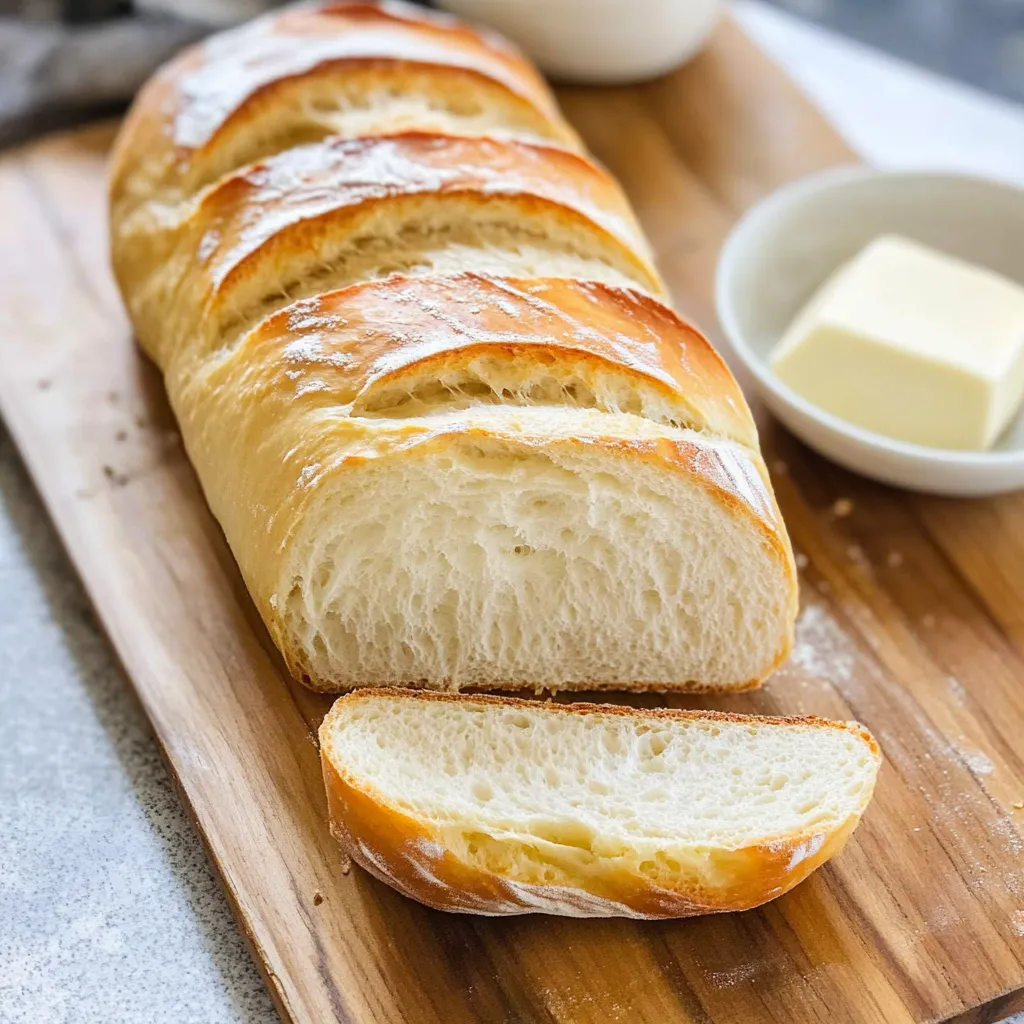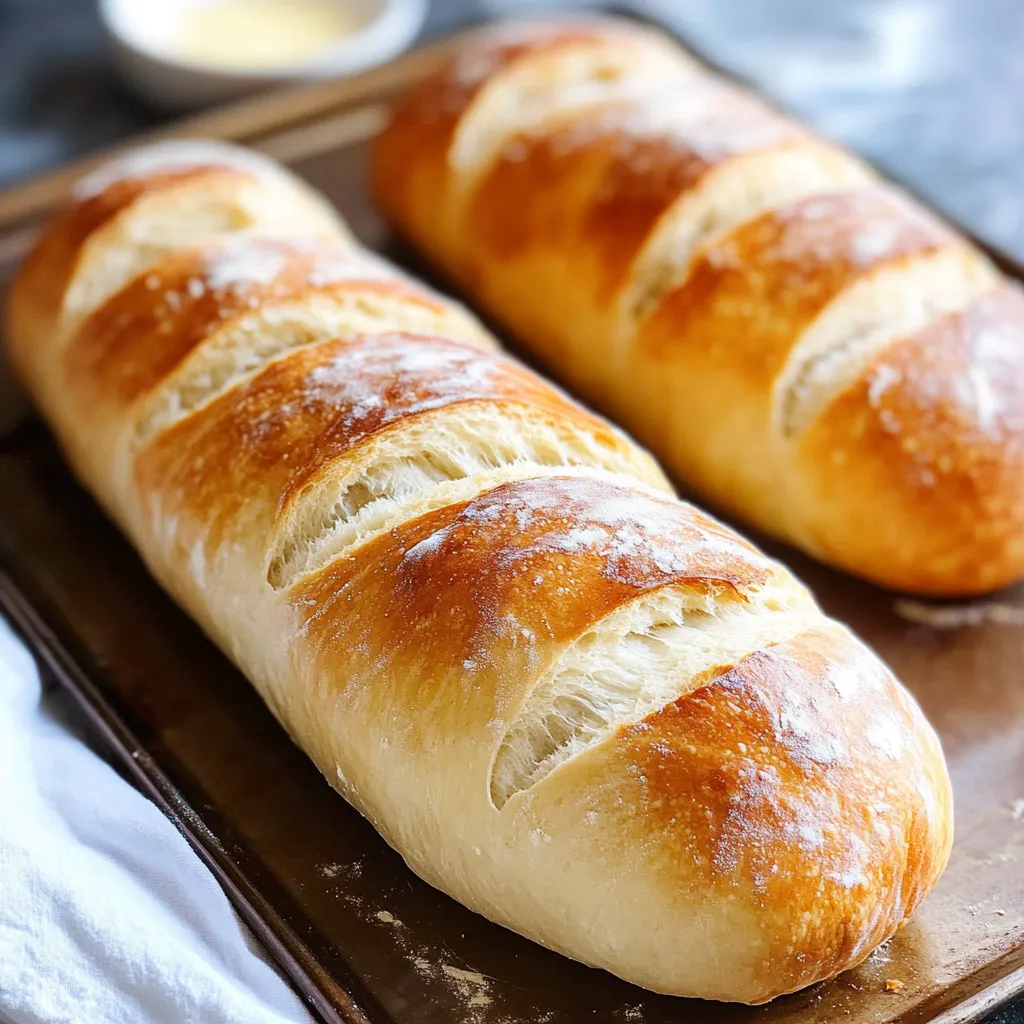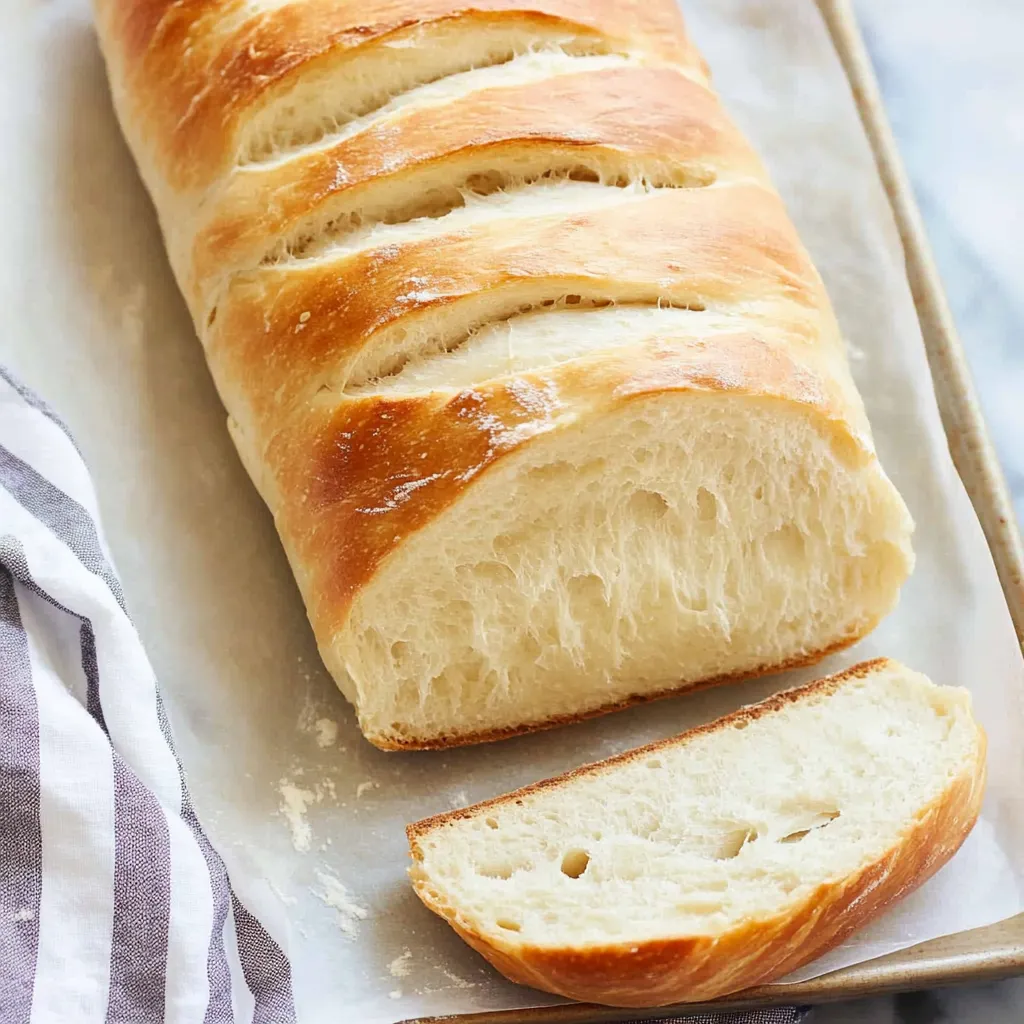 Pin it
Pin it
Nothing beats the smell of homemade French bread filling your home. With its crunchy outside and soft, fluffy inside, this bread makes any dinner feel special. I've spent years tweaking this 90-minute technique, and now it turns out loaves that are just as good as what you'd find at fancy bakeries.
The first loaf I ever made had my whole family standing around waiting. They tore off warm chunks and watched them steam. Their happy faces told me everything - bread you make yourself has something magical that you just can't buy in stores.
Complete Ingredients Breakdown
- Bread flour: Contains more protein, giving you that wonderful chewy bite and sturdy outer shell that French bread needs
- Active dry yeast: The magic starter that makes your dough rise, always get fresh packets for best results
- Warm water: Must be around 110°F - not too hot, not too cold - so your yeast can work its magic
- Fine sea salt: Brings out all the flavors and helps control how the yeast works, creating the perfect inside texture
Shaping Your Dream Baguette
- Yeast Preparation:
- Mix your 110°F water with yeast and a tiny bit of sugar in a clear bowl. Soon you'll see it bubble up and smell that wonderful yeasty scent that means it's alive and working.
- First Mix:
- Add your flour bit by bit to the bubbly yeast water. Wait until each scoop disappears before adding another. You'll start to see real dough forming right before your eyes.
- Working the Dough:
- Push and fold with a steady rhythm, feeling the dough change under your hands. It'll go from rough and sticky to smooth and stretchy as you build up the gluten.
- Creating the Shape:
- Cut your dough in half and roll each piece into a long tube. Pull the surface tight as you go to make sure it rises evenly and looks like it came from a bakery.
- Last Steps:
- Cut slashes across the top with a sharp knife so the bread can grow while baking. Spray some water over it to help get that amazing crunchy outside.
 Pin it
Pin it
I remember watching my grandma knock on the bottom of every loaf she made. She taught me to listen for that empty sound inside. I still use this trick today and it makes me feel connected to all the bread makers in my family before me.
Tasty Food Matches For French Bread
Your fresh bread can become so many different meals. Cut thick slices for amazing sandwiches, dice it up for crunchy croutons, or just dip it in a hot bowl of soup. Each way of serving brings out something different about this versatile bread.
Twists On The Classic Recipe
Try mixing in some herbs de Provence for flavor, or swap in some whole wheat flour for extra nutrition. You can shape it into round loaves instead of long ones, or make tiny dinner rolls that everyone gets their own.
Storing Your Masterpiece
Keep your bread in a paper sack on the counter for a couple days to maintain that perfect crust. When it starts getting stale, just sprinkle it with water and warm it up in a 350°F oven for 5-10 minutes.
 Pin it
Pin it
After baking countless loaves over the years, I've learned that taking your time really matters. Waiting for the dough to rise fully and holding back from cutting into hot bread always pays off. This isn't just a list of steps anymore. It's about honoring traditions, mastering techniques, and enjoying the simple joy of breaking bread with the people you care about.
Frequently Asked Questions
- → Can I make French bread by hand?
- You sure can! A stand mixer helps, but you can mix everything in a big bowl and knead by hand on a floured surface for 8-10 minutes until it’s smooth.
- → How do I check if my bread's done baking?
- Tap the loaf's bottom—it should sound hollow! Or use a thermometer; it’s done when it reaches about 190°F inside.
- → Why didn’t my loaf rise right?
- Water that’s too hot can kill the yeast, or old yeast won’t work. Make sure your water is warm (not too hot) and give your dough enough time to puff up.
- → Can I add extras like cheese to this bread?
- Of course! Toss in a cup of shredded cheese like parmesan or gruyère after the first rise. For herbs, mix in 1-2 tablespoons of dried ones like rosemary or thyme.
- → How do I warm up leftover bread?
- Sprinkle a little water on it, wrap it in foil, and bake at 300°F for about 5-10 minutes. It makes the crust crispy again but keeps the middle soft.
